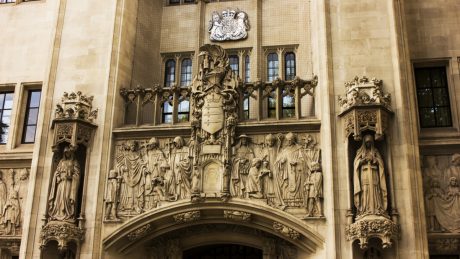The Supreme Court decision in BTI v Sequana provided the first opportunity for the UK Supreme Court to address the duty of company directors to consider the interests of a company’s creditors when the company becomes insolvent or when it approaches or is at real risk of insolvency. Natalie Osafo and Francesca Bugg examine the decision and its implications for company directors.
The Supreme Court decision in Sequana confirms:
- There is a common law duty to consider the interests of creditors. Companies in a perilous financial situation or moving closer to insolvent administration or liquidation should give increased consideration to the interests of their creditors. This should reassure directors as it does not materially change the point in time when the duty is triggered.
- The duty works on a sliding scale. While members of the court differed in the precise terminology used, the consensus seems to be that the duty is engaged when the directors know or ought to know that the company is insolvent or bordering on insolvency (on a cash flow or balance sheet basis) or that an insolvent liquidation or administration is probable. Once engaged, directors will be required to consider the company’s creditors and, where necessary, balance their interests alongside those of shareholders. However, once the company’s insolvency is unavoidable, creditors’ interests will take priority over shareholders’.
- A real risk of insolvency in the future is insufficient to trigger the duty. The company must be bordering on insolvency, or it must be probable that it will become insolvent.
Comments
The duty to consider creditors’ interests has always been part of a director’s fiduciary duty to act in the best interest of their company; it is not an additional duty.
Directors have always owed a fiduciary duty to their companies, including the duty to promote the success of the company and its continued viability (section 172 (1) of the Companies Act 2006 (“the Act”)). Section 172 also sets out in detail the general duty to promote the success of the company for the benefit of its shareholders (known as the “success duty”). Section 172 (3) of the Act recognises that this duty is displaced when the company is insolvent.
The appellant argued that the appropriate trigger for engagement of the creditor duty is a “real risk of insolvency”. We believe the court was right to reject the “real risk” test, which would have imposed an impracticable burden on businesses. This test, which BTI was arguing for in the case, would have engaged the creditors duty at the point of any tangible risk to the company’s solvency. Whereas the court’s threshold requires directors to consider creditors at a later stage and recognises that companies may face risks of insolvency that are not likely to result in the company going under. (For example, if a company is facing temporary cash flow issues because of delays in receiving company receivables or substantial losses or lower than forecasted profits resulting from unexpected market events or other external factors.) With the current global economic downturn, political uncertainty and ongoing effects of the Covid-19 pandemic, several companies may be dealing with short-term financial problems that might not risk or result in insolvency.
Creditors’ interests trumping those of shareholders when a company is on the verge of going under is a radical shift from the long-established position that this should only be the case if the company is actually insolvent. While this may provide additional protection to creditors, directors could face hard decisions and litigation from dissatisfied shareholders/creditors on their compliance (or non-compliance) with the duty. They may, as a result, be inclined to adopt a more risk-averse approach to managing the business. When a company is in serious financial trouble, what is good for creditors will often conflict with the director’s duty to promote the company’s success and shareholders’ desire for the directors to keep trading to minimise shareholders’ losses in the event of insolvency. That tension will need to be carefully managed.
In addition, identifying when the duty starts will be fact-specific in terms of precisely when a company is bordering on insolvency. This carries with it the risk of claims against directors if stakeholders of the company (or, if the company ends up in insolvency, an insolvency practitioner) disagree(s) with directors’ judgment.
What directors now need to consider
When applying the creditor duty in the context of your business, you need to consider who the creditors are and which of them has “the most skin in the game”, ie who has a real and substantial economic interest in the company.
Who the creditors are is relevant because the identities and sums creditors are owed will change as debts are incurred, discharged and refinanced. So, creditors must be considered as a class rather than a fixed group of individuals. Creditors with the most sizeable interests in the business ought to be considered early on. In addition, t may be sensible for directors to consult and seek their approval of riskier transactions to ensure their interests are adequately addressed.
When managing conflicts between shareholders and creditors, it remains the director’s duty to act in good faith in the interests of the company. Managing the conflict will depend on how inevitable insolvency is. For example, if a company is in financial distress, the directors are bound to consider creditors’ interests. However, if a director acts in good faith to promote the continued viability or prosperity of the company and there is a way out of the financial difficulty that will benefit the shareholders and creditors, they are not obliged to treat the creditors’ interest as the exclusive or primary determining factor in their next steps. This must be considered, among other factors, against whether the creditors would be better off if the company were immediately put into liquidation and whether this risky transaction could deepen, not improve, the insolvency. However, once the company reaches the point of no return, or to use the words of Lord Briggs in the decision when you “no longer have light at the end of the tunnel”, then creditors’ interests must surpass shareholders’.
Lady Justice Arden’s judgment suggested that to comply with the creditor duty, directors are obliged not to do anything that might materially harm creditors’ interests. This means directors should avoid engaging in activities that carry a high risk of insolvency or are likely to render the company insolvent.
Practical suggestions
In light of the court’s decision, 10 practical suggestions we would suggest are:
- Staying informed of the company’s financial position, including having access to reliable and up-to-date information. Being passive will not be acceptable.
- Setting up notification warnings to identify when there are signs the company might be close to or at the point of insolvency, and potentially earlier so that you can address any issues promptly.
- Undertaking appropriate training on directors’ responsibilities and penalties if they are disregarded.
- Familiarising yourself with and seeking specialist advice, if required, on when a formal insolvency process such as administration or insolvent liquidation is more likely than not.
- Having regard to liabilities that could foreseeably arise in the reasonably near future, as well as current liabilities.
- Taking timely legal advice when financial difficulties are encountered or are likely. Also, taking advice on the application of the creditors’ duty in relation to those difficulties, and importantly, acting on this advice.
- Managing all the interests in the company until the point at which creditors’ interests must take priority.
- Managing the company’s affairs in a way that considers creditors’ interests and seeks to avoid prejudicing them.
- Identifying and knowing how to recognise transactions and other activities in your business and industry sector that may pose a higher risk to creditors’ interests and having robust internal processes for addressing those risks. For example, releasing or returning capital or assets that might render the company insolvent, including payment of dividends.
- Keeping lenders informed of the company’s financial performance.
Conclusion
Directors ultimately owe their duty to the company rather than shareholders or creditors. The critical goal is ensuring the continued viability of the company. If that is achieved, in principle, all interested parties should be kept happy. However, the reality is that balancing shareholder and creditor obligations is tricky, especially where these collide.
Overall, the Sequana decision should be reassuring to competent directors. Obligations to creditors are an existing aspect of the success duty for directors, so most boards will likely stick to existing practices. However, some might adopt a more cautious approach when engaging in higher risk transactions.
The Supreme Court decision is available here.
You can find further information regarding our expertise, experience and team on our Insolvency and Asset Recovery page.
If you require assistance from our team, please contact us or alternatively request a call back from one of our lawyers by submitting this form.






